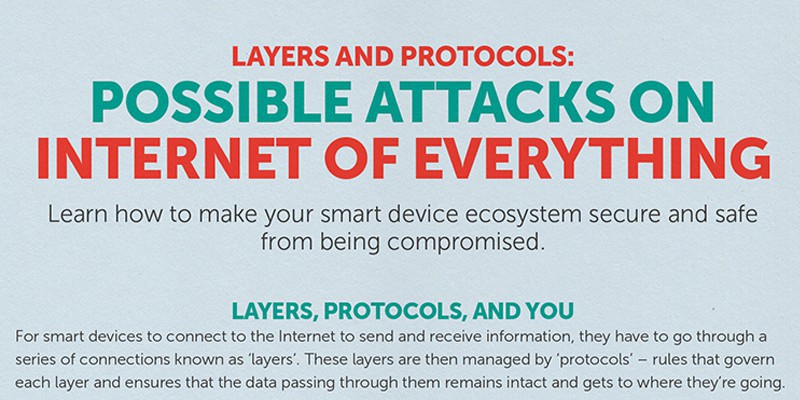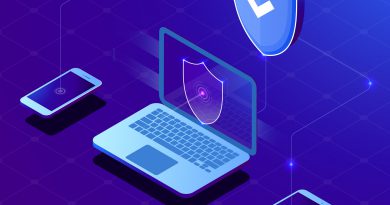The Internet of Everything’s Risks and How to Prevent Them (Infographic)
TrendLabs, Trend Micro’s research and development arm, recently released a report focusing on the possible attacks on the Internet of Everything. The information shared by the cloud security firm concentrated on how to secure your smart device ecosystem and how to keep it safe from being compromised.
Before smart devices can connect to the Internet to send and receive information, they must pass through a series of connections known as “layers”. These layers are managed by “protocols” which are rules that govern each layer and ensure that the data passing through remains complete and gets to its destination.
The first layer is the Internet; this is where all the data usually ends up. Information sent to and from the Internet are usually stored in large data centers. The largest data center in the world is the Range International Information Hub in Langfang, China. At 6.3 million square feet, it is as large as the Pentagon.
The next layer, known as the Session or Communication layer, manages how applications or programs connect to the Internet. Protocols that are involved in this layer are HTTP, the most commonly used method to send and receive files and web pages; and HTTPS, a more secure version of HTTP. Netscape Communications first used the HTTP:// protocol for their Netscape Navigator browser.
 (Click on image for full infographic)
(Click on image for full infographic)
The third layer is the router or smart hub; this is the device that facilitates multiple smart devices in a home or office. This layer is where a hotspot is created so devices can hook onto the connection. The first router was the Interface Message Processor, a main component ARPANET (the first packet network).
The last layer is the Link Layer. This provides a means for smart devices to get to the network and to the Internet, in effect. Protocols utilised here include Ethernet, Wi-Fi, and Bluetooth. According to Cisco Systems, there should be 50 billion connected devices by 2020.
The Internet of Everything is constantly at risk of cybercriminals’ attacks. One of these attacks, called Sniffer attacks, “sniffs” out any unencrypted information passing through a network and steals it. Another type of attack is Password-Based. This is when a cybercriminal breaks into a network or device connected to a network by stealing or guessing the user’s password.
Cybercriminals also use the Denial of Service method. They prevent or slow down certain networks or devices after infiltrating a user’s systems. Man-in-the-middle attacks happen when a third party steals data being transmitted between two parties or devices. Compromised-Key attacks are when the key to encrypted communications is stolen and used to access the encrypted data.
While these risks can happen to anyone, here are a few tips from Trend Micro to protect your Internet of Everything ecosystem and network:
- Enable all security features on all smart devices
- Use secure passwords
- Always keep firmware of smart devices updated
- Patch vulnerabilities as soon as they are announced
- Close any unused ports on all devices and routers
- Utilise encryption for network and smart devices
Comprehensive multi-device protection for you and your family for up to 6 PCs, Macs, Android, and iOS devices. For more info click here.







